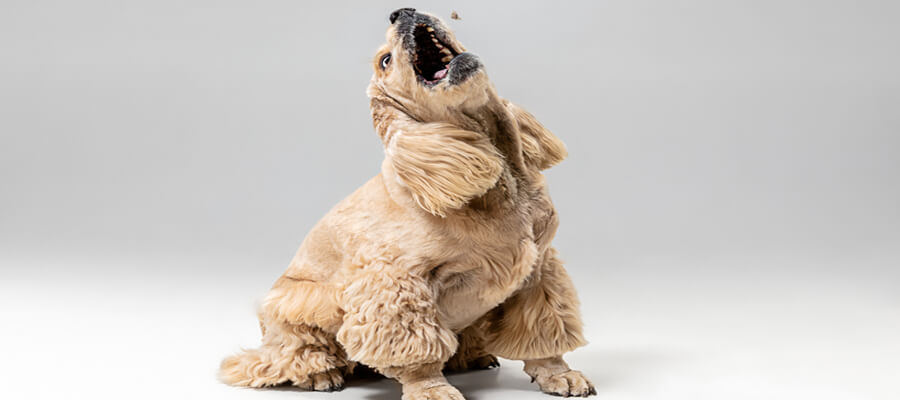
Updated on | by Critter Nets - Blogs
Why Is My Dog Growling Understanding What It Means
Why Is My Dog Growling Understanding the Reasons Behind This Behavior
Introduction
If you've ever heard your dog growling, it may have left you feeling concerned or confused. Growling is a vocalization that can carry different meanings depending on the context, the dog's body language, and the situation. Understanding why your dog is growling is crucial for interpreting their behavior and ensuring their safety and well-being. In this article, we will delve into the various reasons why dogs growl and how to respond appropriately.
1. Communication Tool
Natural Canine Behavior
Growling is a natural form of communication for dogs. It’s one of the ways they express themselves and convey their feelings. Dogs may growl to signal that they are feeling threatened, scared, or uncomfortable. In other situations, they might growl in play or excitement, particularly during games of tug-of-war or chase.
Context Matters
To understand the meaning behind your dog’s growl, it’s essential to consider the context. Pay attention to their body language, the environment, and the specific situation in which the growl occurs. This will help you better interpret their vocalizations.
Essentials for Your Newly Adopted Pet
Welcoming a shelter pet into your life is a beautiful journey. Here are some handpicked items to help your new friend feel safe, loved, and right at home:
2. Warning Signal
Defensive Growling
One of the primary reasons dogs growl is to warn others that they feel threatened or uncomfortable. If a dog feels cornered, scared, or challenged, they may growl as a way of saying, “Back off.” This type of growling is often accompanied by defensive body language, such as raised hackles, a stiff tail, or a tense posture.
Protective Behavior
Dogs are instinctively protective of their territory, family, and possessions. If they perceive a threat to their home, food, toys, or their human family, they may growl to assert their boundaries and discourage intruders. This growling is a form of warning and is often meant to deter potential threats.
3. Playful Growling
Excitement and Playfulness
Not all growling is a sign of aggression or discomfort. Some dogs growl during play as a way to express excitement or engagement. This playful growling often occurs in friendly interactions with their owners or other dogs and is usually accompanied by a wagging tail and relaxed body posture.
Encouraging Play
If your dog growls during playtime, it may be their way of inviting you to join in or indicating that they’re having fun. Keep an eye on their overall demeanor; if they seem relaxed and happy, this growl is likely playful rather than aggressive.
4. Pain or Discomfort
Signs of Distress
Growling can also be a sign that your dog is in pain or experiencing discomfort. If your dog growls when you touch a specific area, during certain activities, or when approached, they may be indicating that something is wrong. This behavior is especially important to recognize, as it can help you identify potential health issues.
Veterinary Attention
If you suspect that your dog's growling is related to pain or discomfort, it’s crucial to consult your veterinarian. A thorough examination can help determine if there are any underlying medical conditions that need to be addressed.
5. Fear and Anxiety
Fearful Growling
Dogs that are anxious or fearful may growl as a defense mechanism. If a dog feels scared in a new environment, around unfamiliar people, or during loud noises (like thunderstorms or fireworks), they might growl to express their discomfort and warn others to stay away.
Managing Fear-Based Growling
To help a fearful dog, it’s important to create a safe and calm environment. Gradual desensitization to the feared stimuli and positive reinforcement training can help alleviate anxiety over time. Consulting a professional trainer or behaviorist may also provide valuable guidance.
6. Resource Guarding
Possessive Growling
Resource guarding is when a dog growls to protect their possessions, such as food, toys, or resting spots. This growling serves as a warning to others to keep their distance from what the dog perceives as valuable. Resource guarding is a natural instinct in many dogs, but it can become problematic if it leads to aggressive behavior.
Addressing Resource Guarding
If your dog displays resource guarding behaviors, it’s essential to address the issue through training and positive reinforcement techniques. Gradually teaching your dog to feel more comfortable with sharing their resources can help reduce growling in these situations. Professional guidance may also be beneficial for more severe cases.
7. When to Seek Help
Recognizing Problematic Growling
If your dog’s growling becomes frequent, aggressive, or is accompanied by other concerning behaviors (like biting or snapping), it’s essential to seek professional help. A veterinarian or certified dog trainer can provide guidance on behavior modification techniques and safety strategies to manage your dog’s growling effectively.
Building Trust and Understanding
Understanding why your dog is growling is key to strengthening your bond with them. By recognizing their needs, emotions, and triggers, you can create a more trusting relationship and address any underlying issues. The goal is to help your dog feel safe and secure while also ensuring that everyone around them feels comfortable.
Conclusion
Growling is a complex vocalization that serves various purposes in canine communication. Whether your dog is warning you, expressing excitement, or signaling discomfort, understanding the reasons behind their growling is crucial for ensuring their well-being and safety. By paying attention to context, body language, and triggers, you can better interpret your dog’s growls and respond appropriately. If you have concerns about your dog’s behavior, don’t hesitate to seek professional guidance to create a happier and healthier environment for both you and your furry friend.
Affiliate Products
We may earn a small commission when you shop through our links — it helps us keep sharing love and care for every dog out there, at no extra cost to you.

